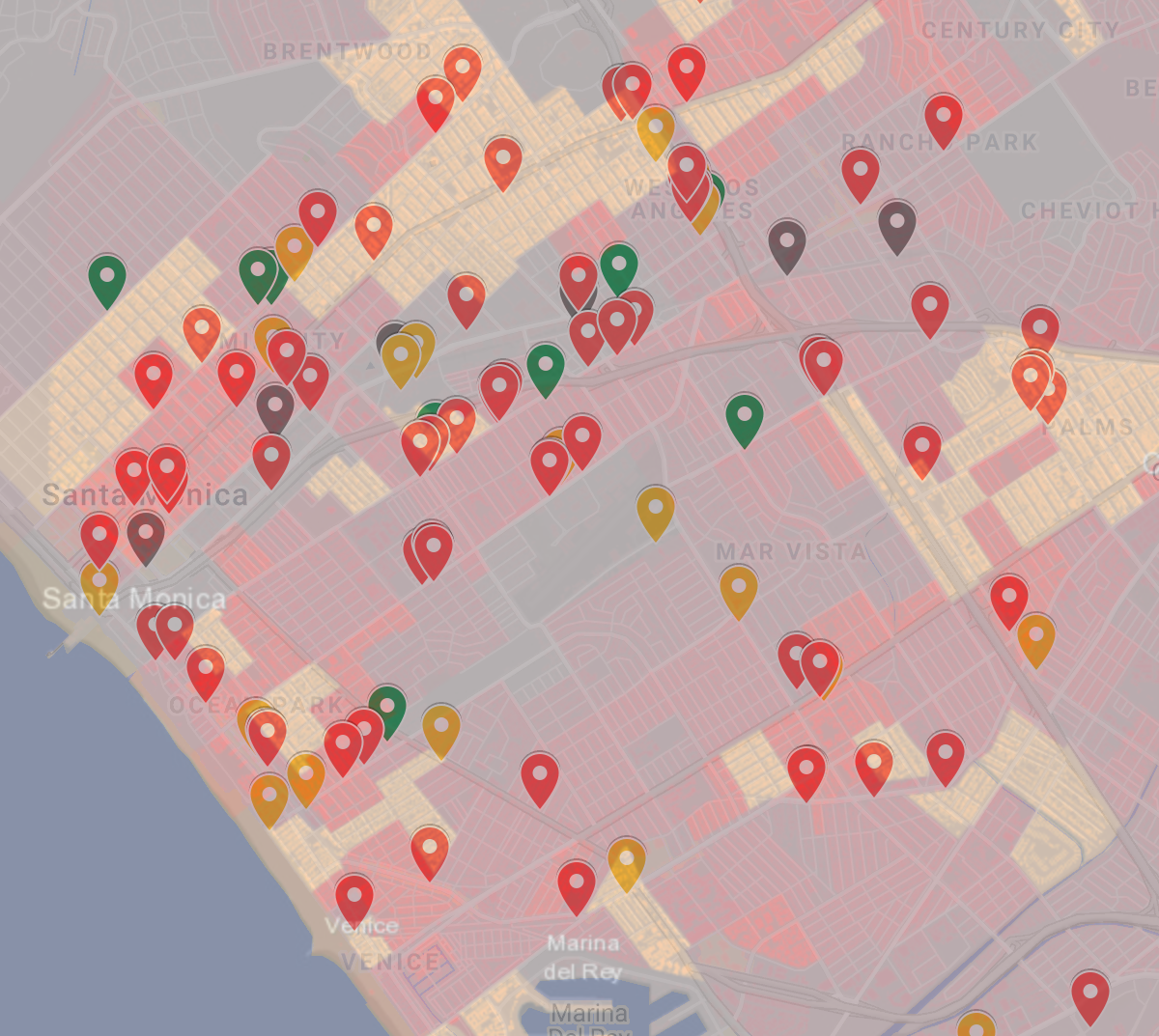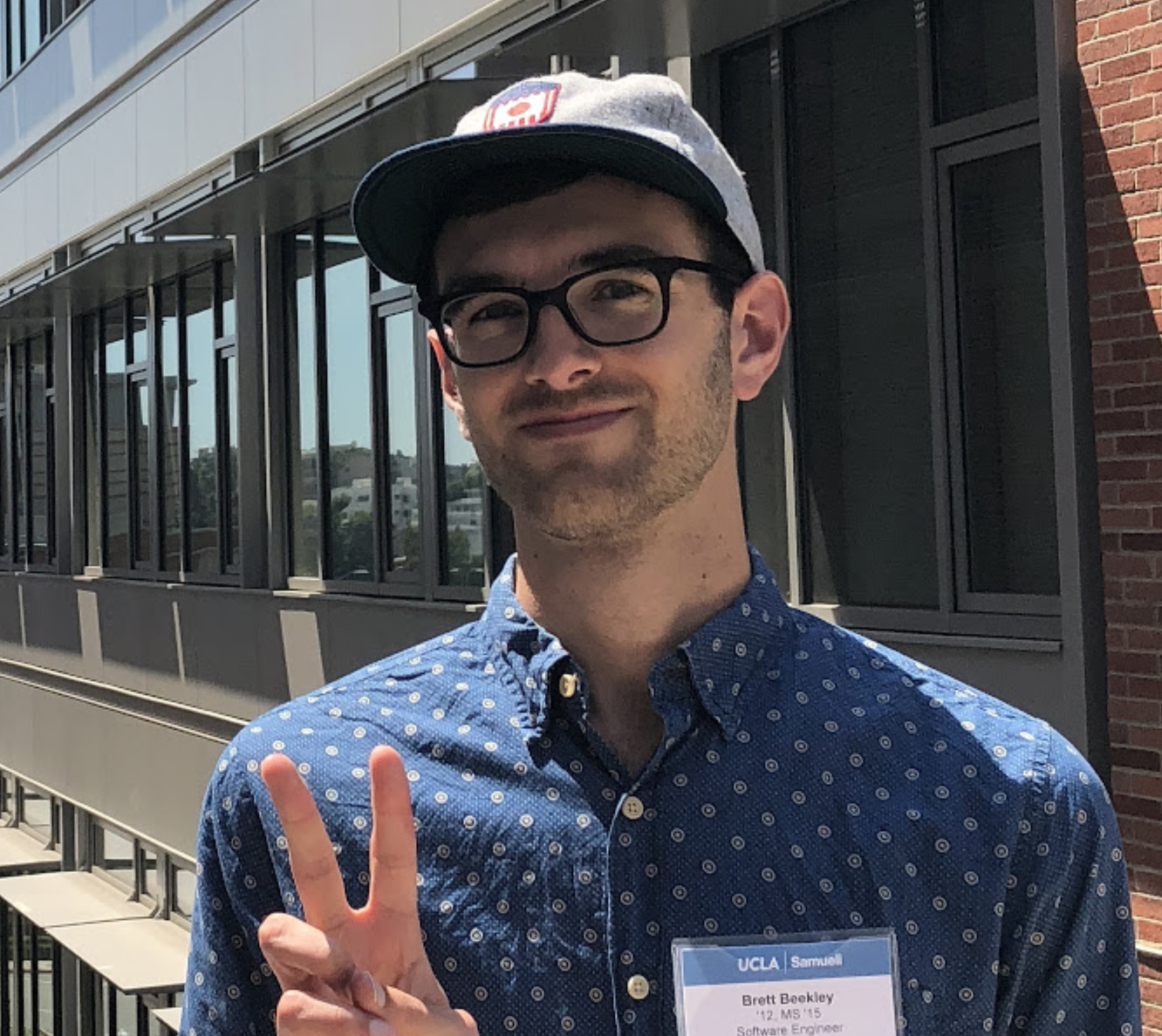Density Of Interesting Things
I’m currently watching a CounterStrike tournament that’s nominally “hosted” in Cologne. Between actions they run B-roll shots of the German city, which make me nostalgic and jealous of the walkable, mixed-use neighborhoods. Particularly now in a COVID-induced WFH age, I’m very aware of how low-density and residential my neighborhood is.
Which prompted me to look into potential “denser” neighborhoods to move to, with the hypothesis: if more people live somewhere, there’s likely a higher density of interesting stuff to satisfy them.
There are other few constraints on where to look, such as commute times. So we picked a couple places, drove out there, and walked around to get a feel for walkability. They were deserts! Despite their >2x higher density (and proximity to some of our favorite places to grab a beer), they didn’t have the density of cafes/restaurants/bars we expected.
We plotted ~100 of our favorite places to go on the Westside, all places we’d love to live within a walk of. Then compared it to a map of population density. From initial glance, there’s not an obvious correlation between population density and density of (our favorite) commercial units.

Density goes from dark red (low) to yellow (high). Red pins: interesting restaurants/cafes; Yellow pins: places w/ outdoor seating; Green pins: grocery stores; Grey pins: Metro stations.
This observation makes sense– almost none of the westside is zoned as “mixed-use”, where higher populations and commercial business coexist in the same area. Instead, commercial properties are generally limited to the lot immediately adjacent to a major street. For example, Pico has a large number of interesting places on our map, but is boardered by blocks of single family zoning.
A few takeways I got:
- There is a ton of intersting stuff within biking distance on the westside. Time to get the bikes in good shape again!
- The separation of commercial and residential areas make most of the westside a (walkable) food desert. Legalize mixed density (or ACUs)!
- The new Google office at the Westside Pavilion is surrounded by blocks of single family zoning. Those few thousand employees won’t be able to live nearby due to lack of housing.
